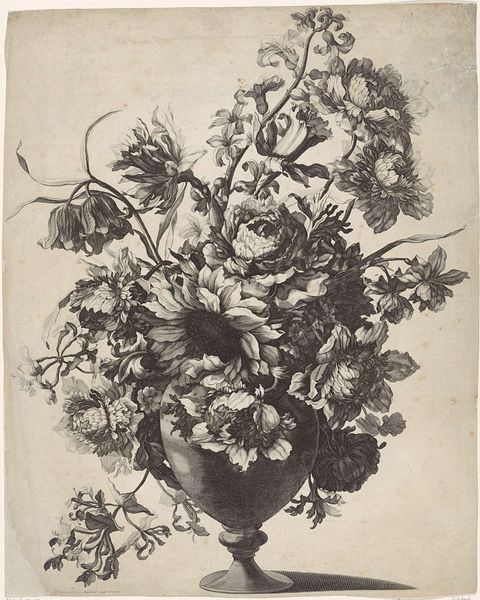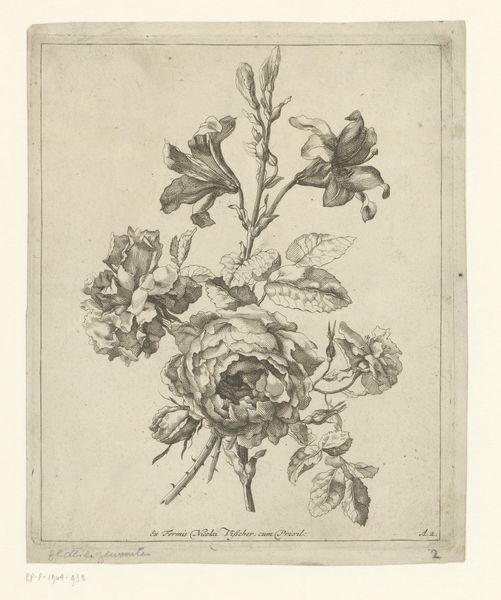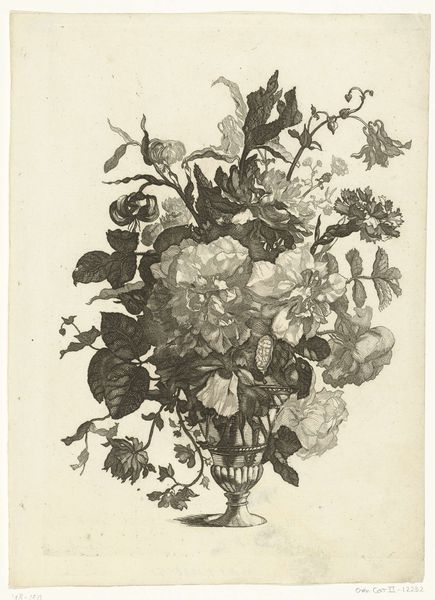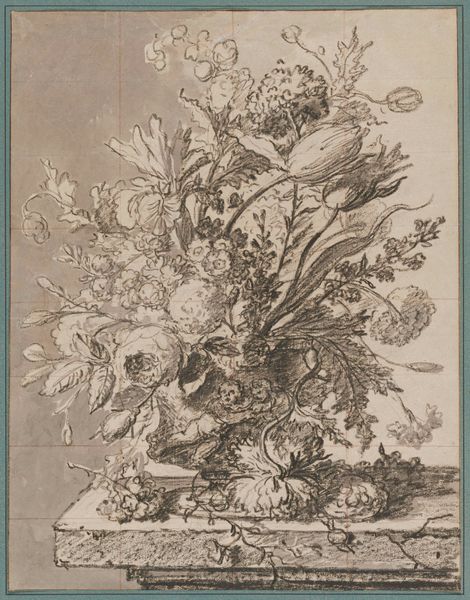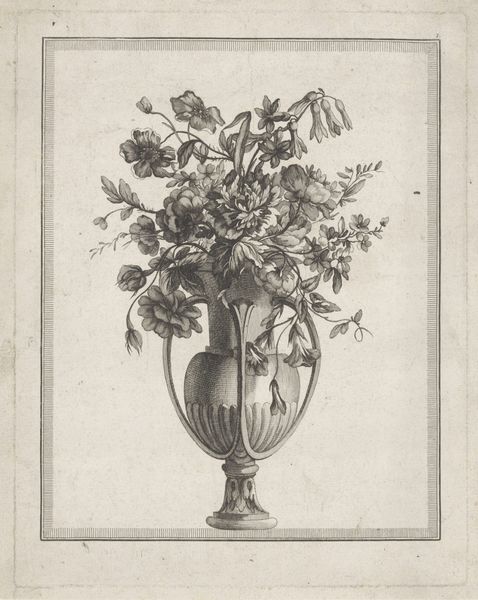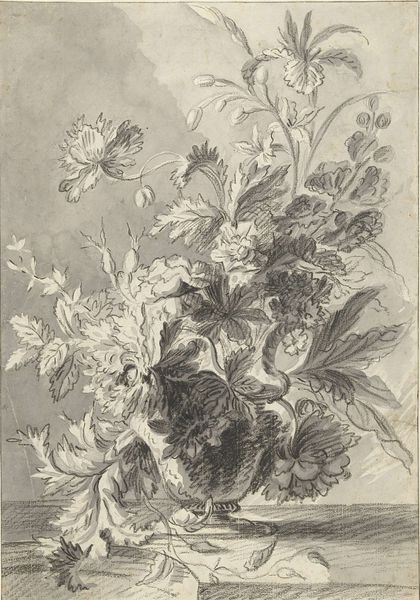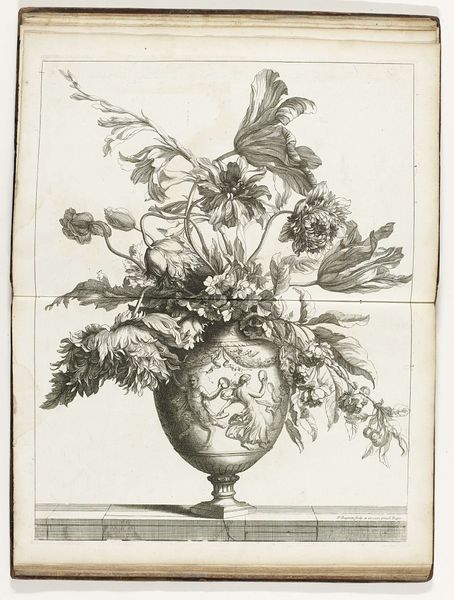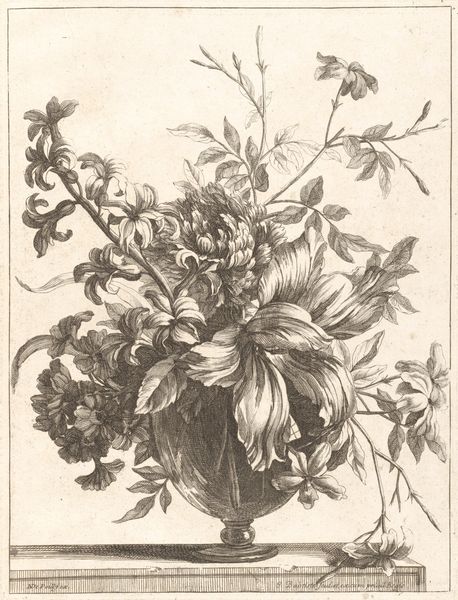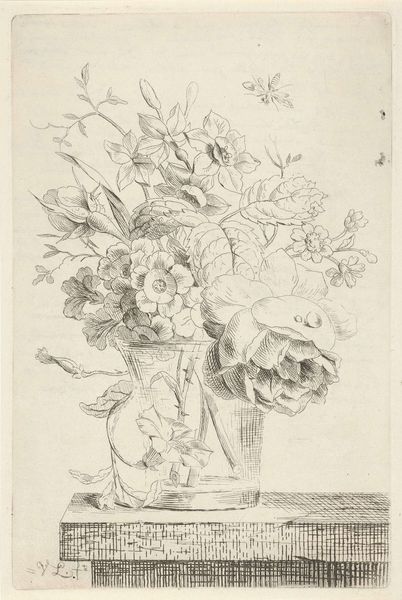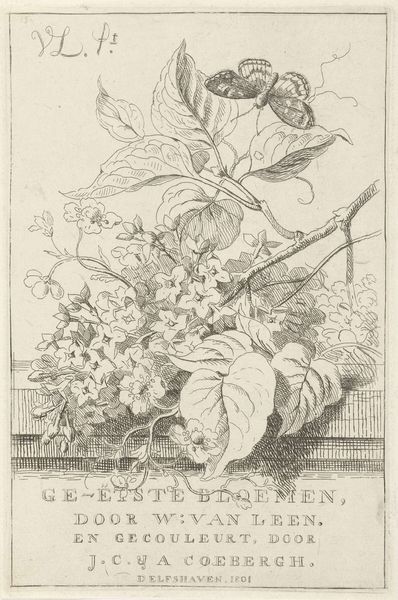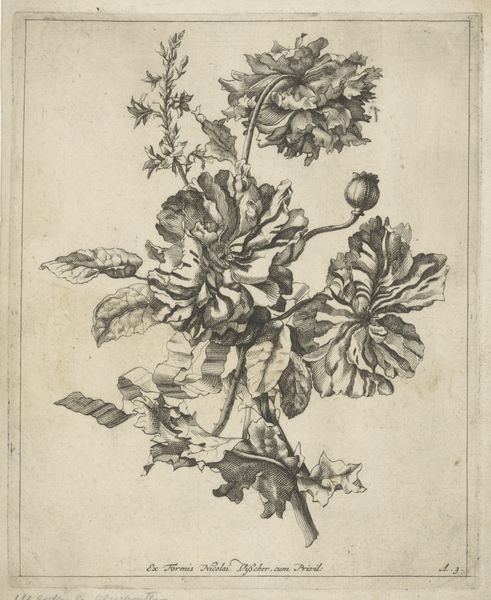
Dimensions: height 39 cm, width 33 cm, depth 6.5 cm
Copyright: Rijks Museum: Open Domain
Curator: It feels instantly melancholic, doesn’t it? The muted palette, the way the blooms seem to droop… there’s a certain fading beauty on display. Editor: Indeed. What you’re picking up on there is beautifully encapsulated in "Still Life with Roses" attributed to Elias van den Broeck, and dated from 1670 to 1708. The application of oil paint speaks to broader developments in artistic craft during the Baroque and early Romantic periods. Let's look closer. Curator: Right. The oil allows such rich layering… look how the light just catches on the leaves, especially near that little butterfly. It gives them a nearly photographic depth! Almost palpable, you know? I can almost feel the softness of the petals against my skin. And did you see the snail up there on the stone? Editor: The placement of the butterfly and snail provide more than visual texture—they subtly denote labor and change. Think about the socioeconomic factors at play; van den Broeck would have needed access to pigment sources, likely relying on merchant networks and skilled manual labor in its preparation. Also consider the market; such refined still-lifes were luxury commodities, prized within certain strata of society. Curator: That's quite a different reading. I mean, I agree, there's technical skill and the reality of consumption inherent in its production, but, ugh, for me it’s the fleeting nature of beauty the painting whispers of. I almost get the impression it smells like earth after a gentle rain. Do you get that? Editor: I see the painting perhaps more materially grounded: It highlights both production processes, and offers a form of capital preservation. Curator: Ah, well, perhaps both perspectives add to its story. A little groundedness mixed with a little romance! Editor: Yes, indeed. Whether read through an artful or analytical lens, it has certainly much to offer.
Comments
No comments
Be the first to comment and join the conversation on the ultimate creative platform.


